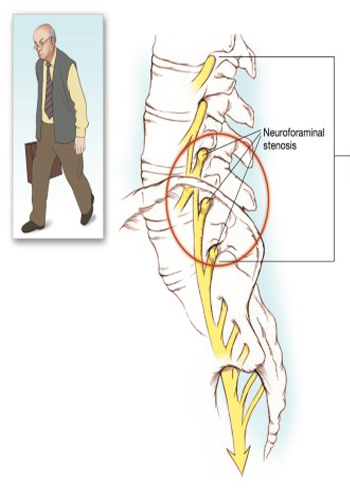Prof. Dr. Serbülent Gökhan Beyaz

Narrow Spinal Canal
Narrow Spinal Canal
Clinical Syndrome
Spinal stenosis (Narrow Canal) occurs due to congenital or subsequent narrowing of the spinal canal. Clinically, spinal stenosis usually manifests itself in the form of pain and weakness in the legs when walking. It is neurogenic the pain is called pseudoclaudication or neurogenic limping. These symptoms are often accompanied by pain in the lower extremities, which is caused by the roots of the lumbar nerve. In october, patients with spinal stenosis may experience numbness, weakness, and he may experience a loss of reflexes. The causes of spinal stenosis include bulging or herniated disc, facet arthropathy, and thickening of the decaminar ligaments. All these factors tend to worsen with age.
Patients with spinal stenosis complain of calf, leg pain and fatigue when walking, standing, or lying on their back. These symptoms disappear if he leans forward from the waist down or takes a sitting position. Often, patients with spinal stenosis, in order to reduce the symptoms of pseudocladicasia, exhibit a monkey posture with a body bent forward and knees slightly broken when walking (Figure 78-2). Patients may also have an affected nerve root or they complain of pain in the distribution of their roots, numbness, tingling and paresthesias. Weakness and loss of coordination may occur in the affected limb.
Rarely, patients with spinal stenosis have pain in the lumbar spinal nerve roots and the cauda equina experiences compression and as a result, lumbar myelopathy or cauda equina syndrome occurs. These patients experience varying degrees of lower limb weakness, intestinal and bladder symptoms. This condition is neurosurgical it represents an emergency situation and should be treated as such, although the onset of symptoms is usually insidious.
Treatment
Spinal stenosis is best treated with a multimodal approach. Physical therapy, which includes heat modalities and deep soothing massage in combination with non-steroidal anti-inflammatory drugs and november relaxants, is a good start point. If necessary, caudal or lumbar epidural nerve blocks can be inserted. Caudal epidural blocks containing local anesthetics and steroids are extremely effective in the treatment of spinal stenosis. Underlying sleep disorder and depression it is best treated with a tricyclic antidepressant such as nortriptyline, which can be started with a single dose of 25 mg before bedtime.
